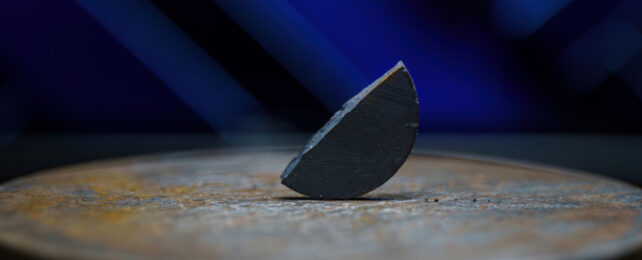Ever since the spooky phenomenon of superconductivity was discovered in 1911, scientists have been searching for superconducting materials that work under practical conditions.
If only they could find a compound in which electrical resistance vanishes at room temperature and ambient pressure – not extreme cold and ultrahigh forces – then we could finally step into the world they envisage of ultrafast computer chips, levitating trains, and superefficient energy grids.
For a hot minute, it looked like 2023 was going to be the year where physicists' pursuits broke through the room-temperature barrier. But those hopes – which were doused in skepticism from the start – were dashed not once, but twice in the space of a few months.
Now, the findings from a team of materials scientists at the Chinese Academy of Sciences (CAS) have been peer-reviewed, putting another nail in the coffin of LK-99, the material a South Korean team claimed in July was a room-temperature superconductor.
If you've been following the LK-99 saga, you'll have been through a rollercoaster of emotions the past few months as scientists scrambled to replicate the South Korean team's extraordinary claims – and were ultimately left wanting.
LK-99 consists of copper, lead, phosphorus and oxygen, and the South Korean team claimed (in two preprints, neither peer-reviewed) that the electrical resistance of the material dropped sharply as it cooled from a rather toasty 105 °C (378 K).
Near-zero resistance is one of two key properties of superconductivity; the other being the way magnetic fields are expelled from superconducting materials in what's known as the Meissner effect, causing them to levitate above magnets.
A series of preprints published just weeks after the news of LK-99 first broke brought those claims about LK-99's purported superconductivity crashing back down to Earth.
One preprint describing LK-99's chemical structure said that structure made superconductivity infeasible. Other experiments suggested ferromagnetism, not superconductivity, was behind LK-99's off-kilter, partial levitation.
A third preprint, from Shilin Zhu and colleagues at the CAS Institute of Physics, suggested LK-99's purported superconductive properties were actually due to impurities in the material – in particular, copper(I) sulfide. That study has now been peer-reviewed, adding weight to its conclusions.
"A surge in misleading information about LK- 99 call[ed] for urgent clarification of its superconductivity," the researchers write.
To recap, Zhu and colleagues synthesized two kinds of LK-99 with different copper(I) sulfide (Cu2S) content and investigated the samples' material properties.
Firstly, they showed the electrical resistance of Cu2S alone plummeted around 112 °C (385 K) and they saw a similar effect in LK-99 samples with lots of copper sulfide impurities.
That 'transition' temperature is not far off 105 °C – the temperature at which the South Korean team reported LK-99's superconductivity properties emerged.
But Zhu and colleagues argue that LK-99's superconductor-like properties most likely originate from the Cu2S, which morphs from a hexagonal structure to a monoclinic one near 126 °C (400 K). Their impure LK-99 samples also didn't show zero resistivity like a true superconductor would.
This "strongly suggests that the superconductivity-like behavior in LK-99 reported by Lee et al. is caused by the structural phase transition of the impurity Cu2S" the researchers write.
Soon after Zhu and colleagues shared these findings as a preprint in August, other researchers not involved in the work told Nature they thought things were "pretty decisively settled" and LK-99 was not a room-temperature superconductor.
Now that Zhu and colleagues' findings have passed peer review, it would seem more researchers agree.
The study has been published in Matter.
